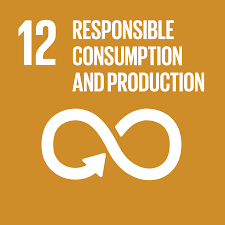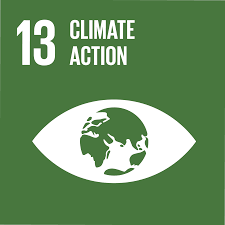Beware of The Plastics
- trishaviswanathan
- Sep 18, 2020
- 4 min read
Updated: Sep 19, 2020
This article is focused on the following UN Sustainable Development Goals:
GOAL 12: “To ensure sustainable consumption and production patterns.”
12.1 “Implement the 10-year framework of programmes on sustainable consumption and production, all countries taking action, with developed countries taking the lead, taking into account the development and capabilities of developing countries.”
12.5 “By 2030, substantially reduce waste generation through prevention, reduction, recycling and reuse.”
12.6 “Encourage companies, especially large and transnational companies, to adopt sustainable practices and to integrate sustainability information into their reporting cycle.”
12.7 “Promote public procurement practices that are sustainable, in accordance with national policies and priorities.”
12.8 “By 2030, ensure that people everywhere have the relevant information and awareness for sustainable development and lifestyles in harmony with nature.”
GOAL 13: “Take urgent action and combat climate change and its impacts.”
13.2 “Integrate climate change measures into national policies, strategies and planning.”
13.3 “Improve education, awareness-raising and human and institutional capacity on climate change mitigation, adaptation, impact reduction and early warning.”

Coca-cola, PepsiCo, Nestlé. The probability of having a product in your house branching from these brands is probably very high. From coffee, to soft drinks and even the unavoidable bottled water. Have you ever thought of what happens when you finish that bottle of water, or the ‘all natural and refreshing’ bottles of 5 Alive? Well, it has been revealed that these multinationals are culprits for acting as the world’s biggest producer of plastic waste. From polyvinylchloride to HDPE and polystyrene, numerous varieties of plastics account for 256,429 types of packaging gathered from just one world cleanup, and one world environment day. What did it take? 10,000 volunteers in 42 countries across 6 continents conducting 239 cleanups. Now, we clearly only have these results because it was recorded and initiated by the Break Free From Plastic organisation. But let’s take some time to think about how much undocumented trash is currently polluting mother nature that surrounds us. It doesn’t just ruin the natural beauty, but has also proven lethal to our animals. And if you don’t really care about animals, think about how the pellets filled with toxins, from our litter, that fishes feed on, is carried back up the food chain to humans that may like to have sushi or fish & chips.
The world is polluted with the trash we produce. You probably didn’t need me telling you this with the rise of movements like ‘Fridays for Future’. So getting to a solution- how can we actually overcome plastic waste to reach SDGs 12 and 13? It would be easy to say ditch plastic for good, but taking a deeper look into the procedure reveals another obstacle that in turn contributes even more to the climate crisis. Companies opt to use alternatives like paper, bamboo, wood, cardboard. However, this leads to deforestation and the inevitable destruction of wildlife habitats.
Instead of clear-felling, producers can carry out selective felling to maintain habitats but regulations should be put in place to ensure transport of machinery for felling does not cause significant damage in the long run.
Coppicing or replant trees to replace ones that were cut down.
Governments can refuse to grant licenses for the conservation of primary forests as they cannot be replaced.
Education is key, whether it be for the farmers learning new and more sustainable methods or corporate employees. Starting this from a young age to ensure children are aware of conservation will always benefit the community.
In addition prices of the goods we buy will rise as firms will have to compensate for shifts in the factors of production. Affording these means higher cost of living so;
We can start off with the more developed nations with higher GDP per capita putting restrictions on companies' use of plastic.
Lesson to learn from an example: the state of Tamil Nadu in India has banned single use plastic in early 2019 which has led to most vendors switching to eco friendly-products, and means of packaging such as jute bags or cornstarch based plates. For business owners that have failed to keep up they should;
Tighten legal controls and ensure inspection on companies external costs, placing higher pollution taxes according to the observed externalities.
Small things to be part of the solution, and not the pollution:
Using pottery, stainless steel, glass, pressed hay, beeswax coated cloth, seaweed or based packaging for storage.
Even though recycling uses up much more energy and money, try to use any bin you see because it will contribute to the idea of reusing and reducing rather than throwing it into landfills.
Bar soap, shampoos and conditioners rather than bottled.
Check out organisations like Greenpeace, Life Without Plastic or Plastic Pollution Coalition for more information on how you can help the world.
Or you can just do it yourself! Plan cleanups, whether it be on the beach or around the city (hopefully after the pandemic calms down).
Try to carry out a brand audit when you do so.
Remember that we are the first generation to feel the impact of climate change, and will be the last if we don’t take adequate action.












Comments